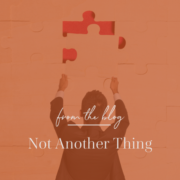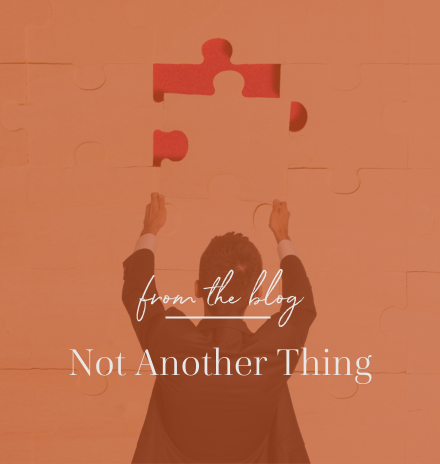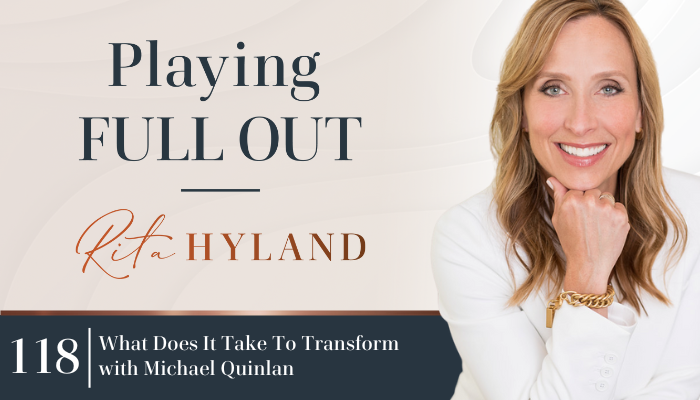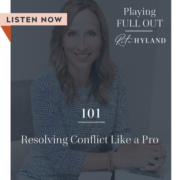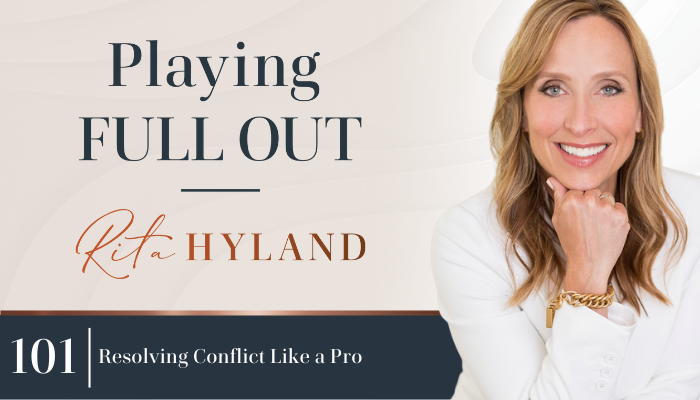How To Engage In Pressureful Situations While Maintaining Your Best Self
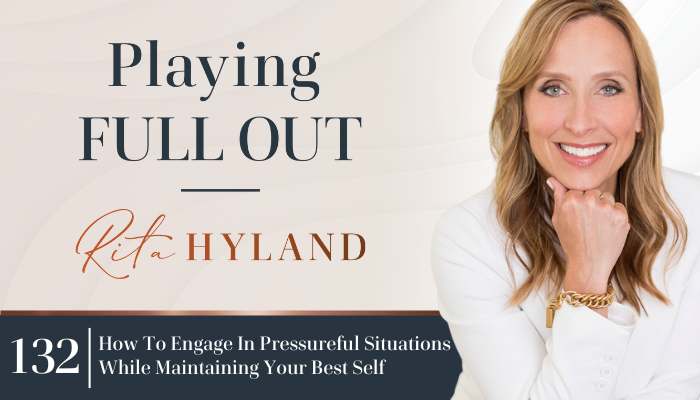
Listen to the full podcast episode to learn about the science-backed practice that has not only changed my life but also the lives of countless people over the last two decades. This is something you can’t ignore if you want to achieve that great goal you identified for this year and write your new future.
How do you engage in pressured situations while maintaining your best self? What do you do to manage and prevent stressful situations from negatively impacting your behavior?
In an ideal world, we don’t feel pressure at all—we hold boundaries, disarm conflict, and let things roll off our back. But we know that’s not reality all the time, right? We are complex creatures with emotions and past experiences that can trigger us. Whether it’s deadlines, difficult conversations with colleagues, or even complicated family matters — pressure is an unavoidable part of life.
Of course, being self-aware is the first and foremost way to decrease our reactivity. By examining what triggers us, shining a flashlight on our blindspots and peeling back the layers, we can unlock our best selves and our best levels of leadership. BUT what do you do when the pressureful situation still strikes and you are knee-deep in it?
In this episode, I’ll dive into how we can handle these moments in real-time without losing control and instead become models of the behavior we most want to see in our board rooms, classrooms, and family rooms.
The Reality of Pressure and Its Impact
Recognizing and understanding why we feel pressure in different scenarios can help us improve our self-awareness in the moment.
In a meeting I witnessed a team member, Tom, becoming increasingly agitated. His voice grew louder and more aggressive. The tension was evident and most in the room grew progressively uncomfortable. But then, Tom did something extraordinary. He paused, took a breath, and became aware of his behavior in real-time. Tom performed a quick self-assessment and chose to change his approach. He then apologized, acknowledged the pressure he was under and said that it still didn’t justify his behavior. This honest self-assessment and admission not only transformed Tom, but also transformed others in the room, allowing everyone to relax and feel compassion. It brought the team back to the real issue, enabling us to work together more effectively.
The Way We React to the World is Significant
Unexpected and uncontrollable events happen all the time. So, we need to know what we can do to avoid being hijacked by these moments and instead maintain our best selves. We need effective strategies. The good news is that there are ways to dismantle and redirect these pressureful situations before they escalate or harm our relationships and careers.
Here are the Five Steps to Maintain Your Best Self Under Pressure
- Be Aware of the Moment
Recognizing these pressureful moments makes all the difference. It might seem simple, but it’s not. Pressure triggers an instinctive response from our sympathetic nervous system, often before we’re even aware of it. Noticing physical signs like increased heart rate, faster speech, or sweaty palms can help you become aware that you are moving to a flight or flight response.
- Pause
Once you’re aware of a pressureful situation, pause. This allows you to become an objective observer of your situation. By stepping outside yourself and looking back — neutrally — you can see your behavior as it’s occurring. Slowing your heart rate down with deep breathing is extremely influential when you notice the physical experience of fear manifesting in your body. One simple way is to inhale for four, hold for seven, exhale for seven. This will reduce the pressured feeling in the moment and move you from a reactive to a calm state.
- Give Your Pressured Self a Direction
When I feel pressured, I am open to help. The good news I’ve learned is that we can actually help ourselves in these moments. For me, the simple direction of “release” can take me back to my center. It’s like telling a dog to drop the bone. This simple direction can shift me when the pressure is mounting and I feel more defensive or aggressive in a certain moment.
Becoming defensive under pressure is a very natural and common way we armor up to protect ourselves when we interpret a situation as threatening. Unfortunately, being defensive (other than when we are being physically attacked) is also unproductive and detrimental. You can’t be at your best—thinking clearly or solving problems effectively—when you’re defensive. So, when you feel the urge to react negatively, remind yourself to “release” the fear or tension in that moment.
- Perform a Self-Assessment
We know that when we feel pressured, we’re often driven by fear or worry. Certainly not our best selves. To get to the root of why this is, ask yourself these two questions: “What am I really afraid of?” and “What is my truth”? Often, our fears are irrational and identifying the truth allows us to return from our pressured selves back to our best selves.
This was best demonstrated by Tom when he was able to do this in real-time and owned what he feared — that his team wouldn’t perform and that would lead to his failure and judgment from stakeholders. He then identified what was as true (or more true) than his fear, that he could lead his team to successful completion with his colleagues’ support. By pulling out of his fear, he was able to not lose control and instead access better resources and support.
- Follow the #1 Leadership Principle: Lead from Love
One way to practice this is to ask yourself, “What would love do here?” This principle helps you respond with empathy and compassion rather than fear and defensiveness. Choose to lead from love even when the pressure is on.
Now, whenever you feel pressure rising, you have a complete process to help you rise as an employee or leader:
-
- Be aware you’re in a pressure moment. Name that pressureful moment.
- Pause. Objectively observe yourself.
- Give direction and help your pressured self. Simply provide the part of you that is in fight or flight to “release.”
- Perform a self-assessment. Start asking yourself, “What am I afraid of?” and “What is the truth?” Then behave according to the truth.
- Lead from Love.
Remember, if you shut down, others shut down. When you stay calm you will elicit calm from others.
In each pressured moment lies an opportunity to exhibit your highest potential. Use these strategies to transform pressure into growth and demonstrate emotional maturity that sets you apart and drives you towards more substantial, fulfilling outcomes in every area of your life.
In this episode, I share:
- How to recognize a pressured moment as it’s rising
- How to avoid reacting and instead dismantle a pressured situation like the great leaders do
- Five simple, practical steps you can use in real-time to maintain your best when the pressure is high
- The role and advantage of self-awareness when the stakes are high and the decisions matter
Resources and related episodes:
- Tune in to the previous episode, (Part 2) Enrich Your Relationships with The Enneagram and Leslie Neugent
- Try these Mindfulness Apps: Apps like Headspace or Calm can help you develop mindfulness practices.
- Read the book, “Emotional Intelligence” by Daniel Goleman
- If you’d like to be notified of when new podcast episodes are released, you can do so here: Playing Full Out
- Learn more about the Inside Out Method
- Connect with Rita on LinkedIn
Subscribe on Apple Podcasts for more tips, tools, and inspiration to lead the optimal vision of your life, love, and leadership. Remember, a half version of you is not enough. The world needs the fullest version of you at play.
___
About Rita Hyland
With over 20 years of experience as an executive and leadership coach, Rita helps leaders — emerging and established — excel in corporate and entrepreneurial environments.
Rita believes if leaders were more clear about how transformation really works and more intentional about creating what they want, their impact, success, and influence in the world would be unstoppable.
Through her coaching programs, private coaching, and masterminds, Rita shows leaders how to win consistently and create the impact and legacy they desire.
Central to Rita’s work is the understanding that you will never outperform your current programming, no matter how strong your willpower.
When you learn to use Rita’s proprietary Neuroleadership Growth Code, a technology that uses the best of neuroscience and transformational psychology to hit the brain’s buttons for change, YOU become both the solution and the strategy.
Her mission is to end talented, hard-working, and self-aware leaders spending another day stuck in self-doubt or confusion and not contributing their brilliant work and talent the world so desperately needs.


